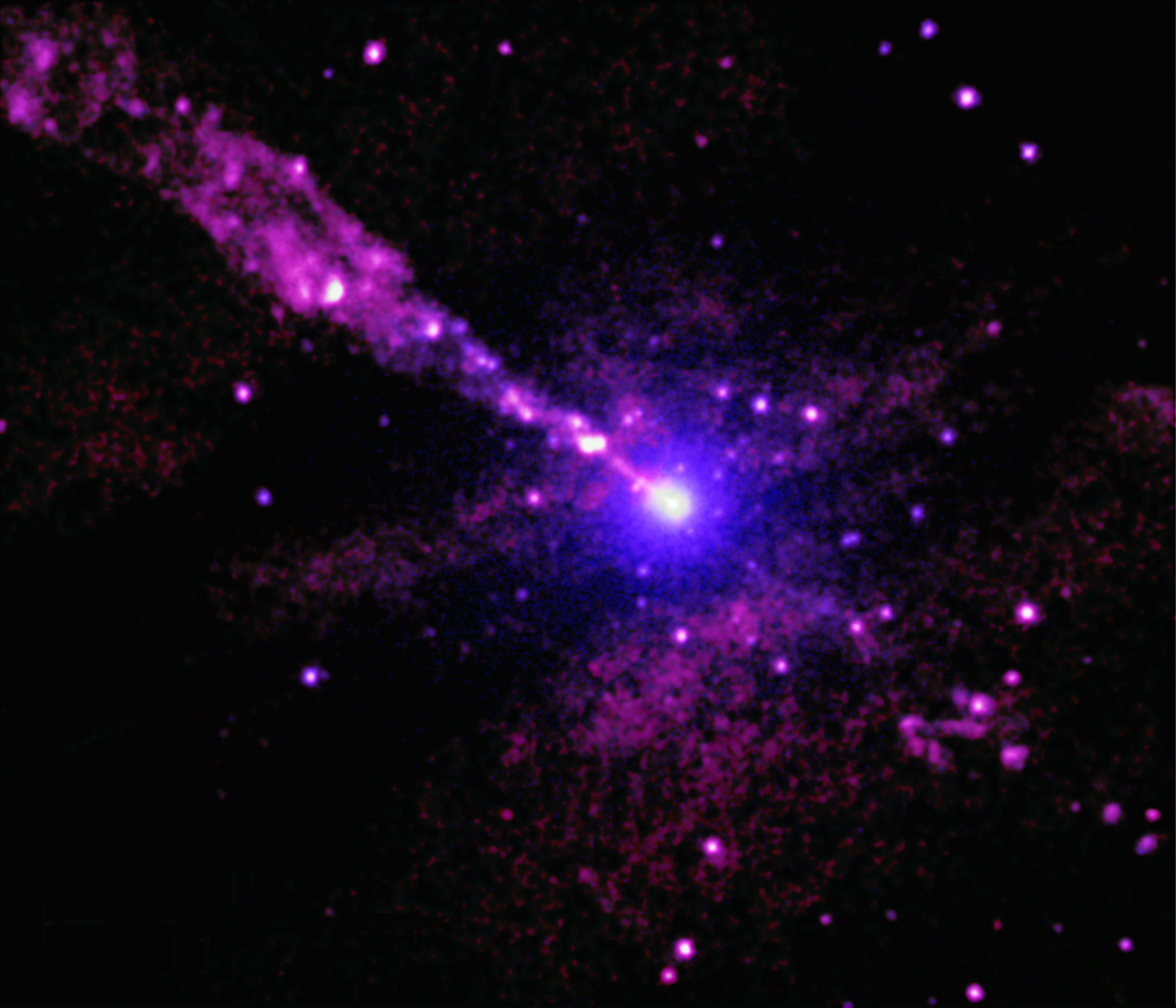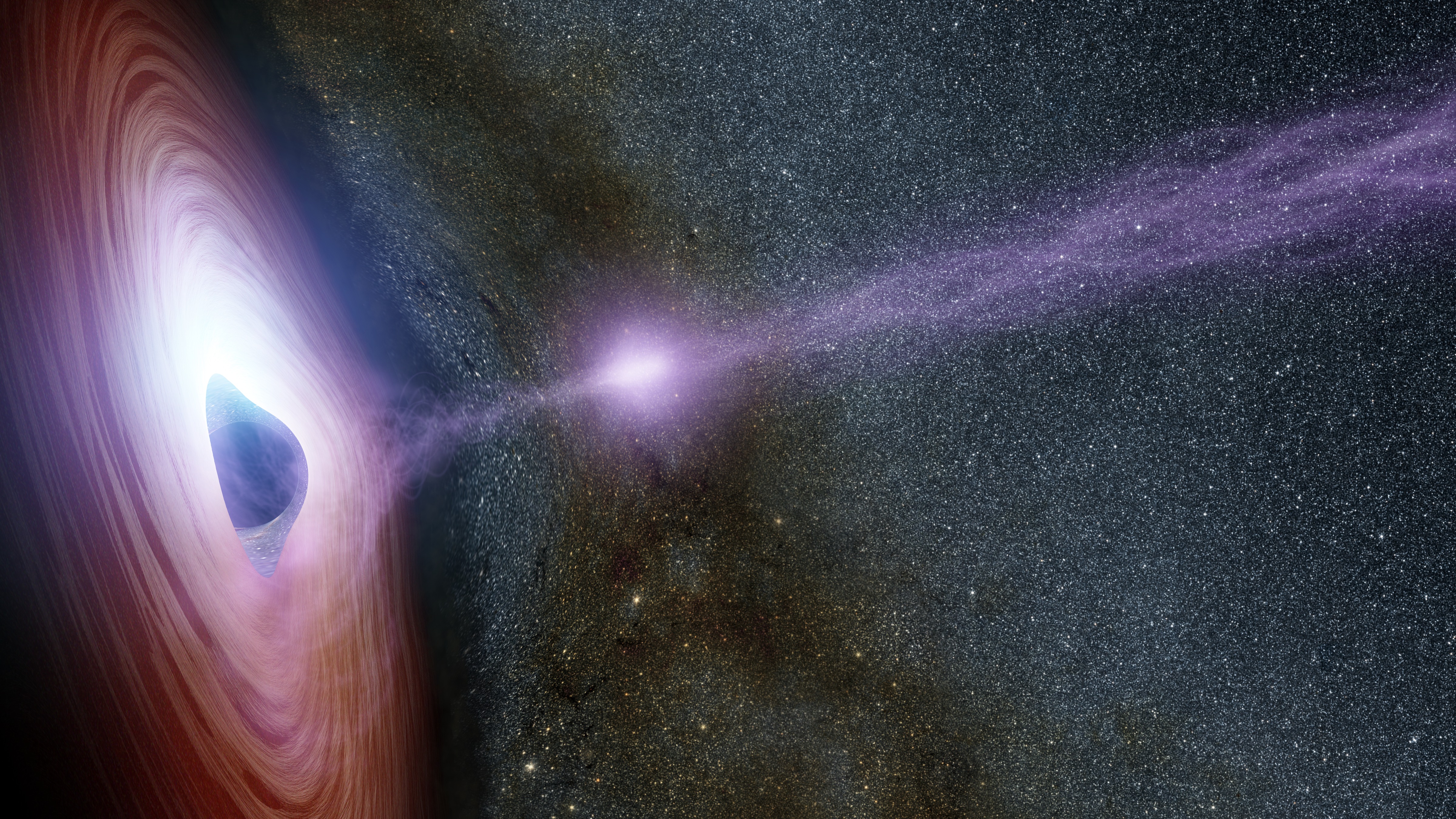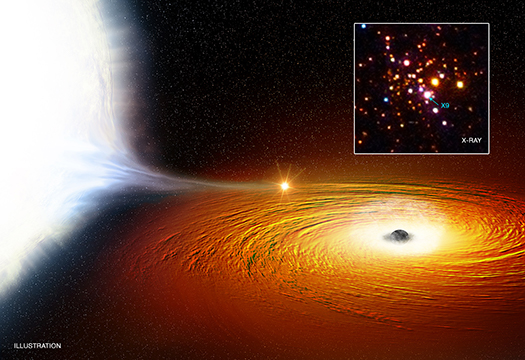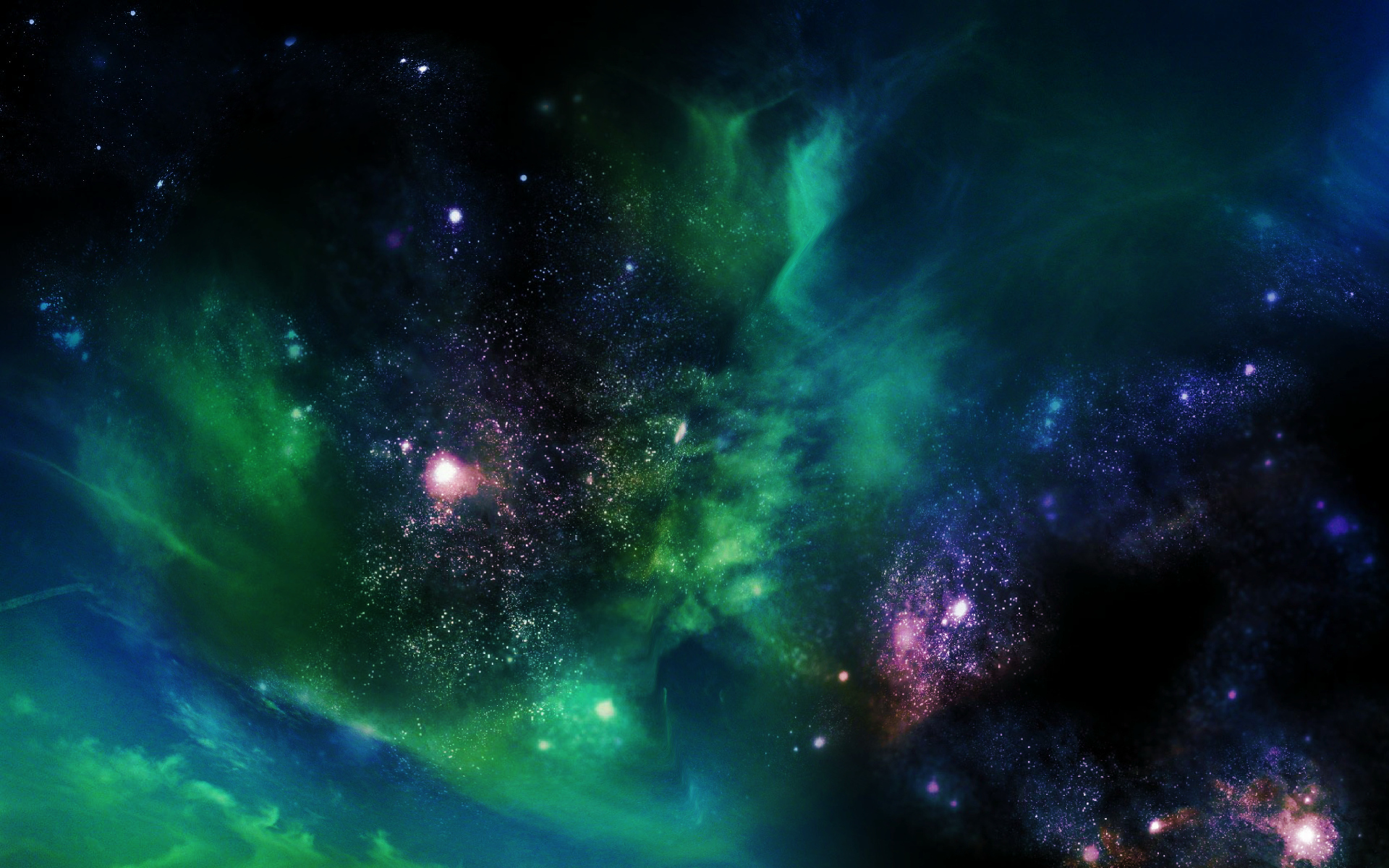
NASA's Chandra X-Ray Observatory helped diagnose the cause behind a large kink in a huge filament near the center of the Milky Way.

Using NASA’s Chandra X-ray Observatory, astronomers have found an unusual mark from a giant black hole’s powerful jet striking an unidentified object in its path.

To celebrate the 25th anniversary of its launch, NASA’s Chandra X-ray Observatory is releasing 25 never-before-seen views of a wide range of cosmic objects.

Astronomers have detected X-rays from Uranus using NASA's Chandra X-ray Observatory. This result may help scientists learn more about this enigmatic ice giant planet in our solar system.

The biggest explosion seen in the universe has been found. This record-breaking, gargantuan eruption came from a black hole in a distant galaxy cluster hundreds of millions of light years away.

It's been a bad couple weeks in space. A week ago, technical difficulties forced engineers to put the Hubble Space Telescope's science mission on hold. Now, the Chandra X-ray Observatory is in safe mode, too.

The Chandra Observatory has found direct evidence for up to 10 stellar-mass black holes and thousands more lurking within a few light years of Sagittarius A*, the supermassive black hole at the center of the Milky Way.

A mysterious flash of X-rays has been discovered by NASA’s Chandra X-ray Observatory in the deepest X-ray image ever obtained. This source likely comes from some sort of destructive event, but may be of a variety that scientists have never seen before.

Imagine being caught in the clutches of a black hole, being whirled around at dizzying speeds and having your mass slowly but continually sucked away. That’s the life of a white dwarf star that is doing an orbital dance with a black hole.

Researchers have used NASA's Chandra X-ray Observatory to produce an X-ray image of space (the deepest-ever X-ray, in fact) that has uncovered an abundance of supermassive black holes.

Although there are no seasons in space, this cosmic vista invokes thoughts of a frosty winter landscape. It is, in fact, a region called NGC 6357 where radiation from hot, young stars is energizing the cooler gas in the cloud that surrounds them.

The X-ray emissions were discovered by chance beyond the Milky Way and no one really knows what is causing them.

In 2009 astronomers detected an unusual object, named CX330, as a source of X-rays as it was surveying the center of the Milky Way galaxy but they had not idea what it was. Today, astronomers have a better idea to what this strange object is.

Formed in the first 4 billion years of the universe, cluster is 1,000 times more massive than the Milky Way.

Astronomers from the University of Bonn in Germany, have discovered what appears to be the longest X-ray tail associated with a stripping process from a galaxy on a large scale. This galaxy with the enormous X-ray tail is a member of a galaxy cluster known as Zwicky 8338.